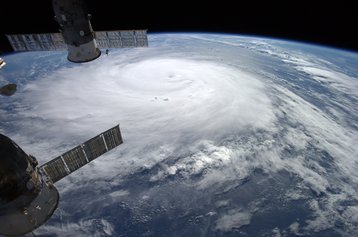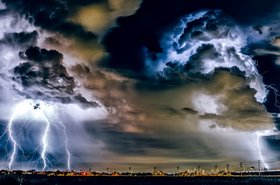You’ve assembled a personal storm kit and you’re ready for whatever Mother Nature throws at you. Bottled water: check. First aid kit: check. Flashlight: check. But what’s the plan for your cloud infrastructure?
With hurricane season upon us, it’s time for your enterprise to revisit its disaster recovery (DR) plan. Although DR plans can fall to the back burner when you’re facing the day-to-day grind, an effective plan requires detailed planning and ample time for testing.
Data backup preparations should not be taken lightly. In fact, they can save companies millions of dollars in the aftermath of a storm. As hurricane season picks up, you’ll need to keep an eye out for common pitfalls and focus on shoring up your organization’s disaster recovery plan to avoid a data catastrophe.
Pain points on the path to disaster recovery
When Hurricane Harvey ripped through Houston in 2017, it flooded 600 million square feet of leasable space. Office buildings comprised 70 million square feet of that space.
With businesses literally underwater, many were forced to suspend operations for weeks, largely because they lacked comprehensive DR plans. But if they had addressed the tough questions when they defined, implemented and tested their plans, they probably could have mitigated the worst of the damage.
As we head into a new hurricane season, here are some of the most challenging steps to work through when creating an ironclad DR plan.
● Nail down a tested, proven plan. While 95 percent of businesses have a disaster recovery plan in place, according to Spiceworks, only 34 percent test their plans at least once per quarter. Implementing a plan is a step in the right direction, but a plan is nothing without solid, regular testing. In addition to testing, don’t forget documentation. In the midst of a disaster, it’s possible that responding personnel may not be familiar with the plan or testing processes.
This is especially the case when executing failovers, which occur when standby equipment automatically takes over after main system failure.
● Maintain two skilled teams in separate geographies. Depending on the emergency you face, personnel may be unable to perform disaster recovery processes during a failover event. So, I recommend relying on two teams in different geographies, both of which know how to execute your disaster recovery plan. Too often, teams view this measure as a nice-to-have, rather than a need-to-have.
When disaster strikes and their single team isn’t physically able to set the plan into motion, the business suffers. Be smart — create multiple, geographically diverse teams and reap the benefits when a storm renders one team incapable of saving the day. To ease the burden of hiring and training a strong DR team in two locations, turning to DRaaS (disaster recovery as a service) can be a lifesaver, allowing you to outsource your DR plan to an already skilled team.
● Decide when to pull the trigger. Disasters like Hurricane Harvey make the decision to engage a disaster recovery plan easy because they impact the affected region for an extended period of time. But events aren’t always that straightforward, and it may be tricky to calibrate your response to certain emergencies. For example, with an extended power outage, a battery backup might be a better option than executing a full failover. Or in the event of a flood, it may be unclear where exactly the watermark will peak, leaving next steps uncertain. By defining policies for every kind of event, you’ll make failover decisions easier when you need to respond to a disaster.
As hurricanes become more intense, a strong disaster recovery plan will become even more important to the health of a business. In the same way that you maintain adequate insurance coverage on your business, you need to keep your disaster recovery plan up-to-date. To get started, find a DRaaS (disaster recovery as a service) solution capable of scaling with your business. And if disaster strikes, you’ll be ready for it.





